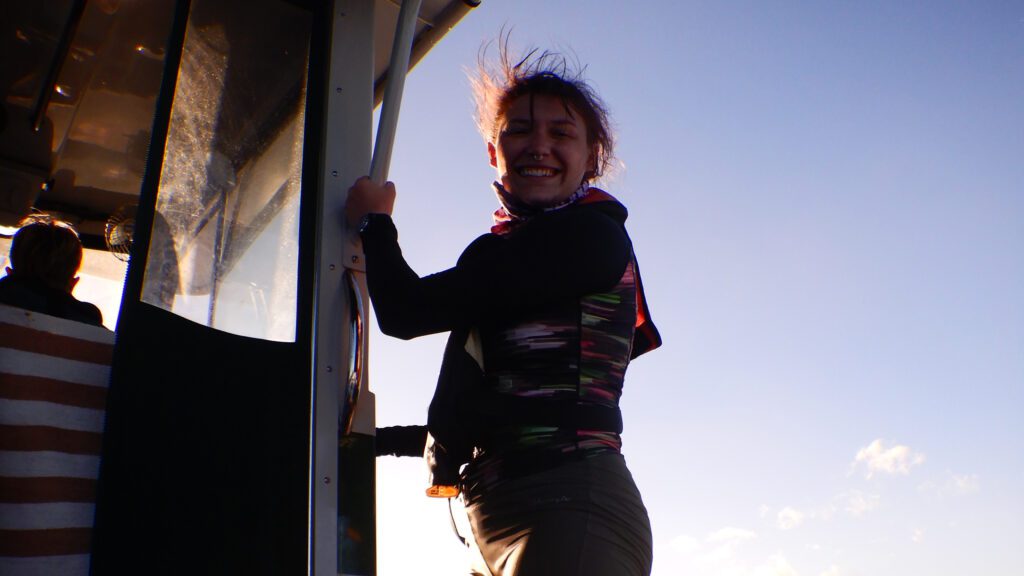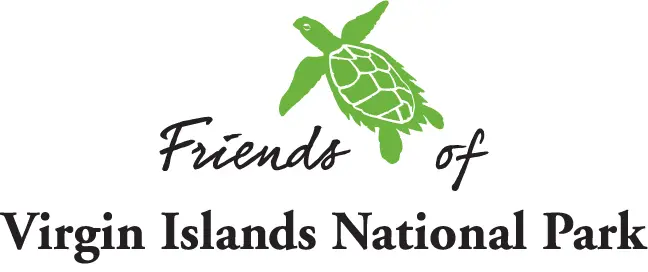Archaeology Intern Log : Anna Chitwood : Jan to April 2022
Hello! My name is Anna Chitwood, an Archaeology graduate student from Northern Illinois University. As of January 15th, I have been an archaeology intern with the Virgin Islands National Park, working alongside Chief Archaeologist, Ken Wild. My research interests focus on the Paleoethnobotany, the study of ancient plant remains found at prehistoric sites.
The first week as an intern of the Virgin Islands National Park, I had the opportunity to assist with an underwater survey at Leinster Bay and Waterlemon Cay. It wasn’t until a few days before the first survey that I even learned to snorkel, so I definitely felt out of my comfort zone in the beginning on the first day but quickly got the hang of it. The purpose of the underwater survey was to determine if there were any cultural remains around the reefs so that nursery coral could be planted to revitalize the reefs. Scuba divers involved included park archaeologist Ken Wild assisted by park biologists Thomas Kelley, Anna Toline, Devon Tyson, and Ranger David Horner. Ken searched the ocean floor using metal detectors to identify any metal that could belong to shipwrecks and other cultural remains, to identify areas to avoid when placing nursery coral. While the scuba divers were underwater, I stayed on the surface snorkeling to direct them and take GPS points.
If metal was detected and the scuba divers determined the detection was worthy of noting, they would send up a signal and I would swim to their location and take GPS points so a map could be made showing what areas were good to plant. It could be rather tiring at times, especially at Waterlemon Cay because the current was strong, and it was quite cold after being in the water all day. The first day of survey, we had a few GPS points, but the second day was exciting when we found a prehistoric celt just off of Waterlemon Cay in about fifteen feet of water. A prehistoric celt is a stone tool used for multiple different purposes, such as for a club or to carve out canoes. We are unable to determine how it may have ended up in the water but regardless, a great find.
The last day of survey of we had a few more GPS points, including one that prompted the park archaeologist to surface to tell me what we were looking at was “very old and very significant” which we hope to return to in the future. Overall, doing the surveys was a wonderful experience and I hope in the future to be able to learn to scuba dive so that I can be more hands on.
In late 2021, an excavation was completed on the Annaberg Shoreline to determine what was archaeologically there before a new walkway is constructed and erosion preventative measures are taken. The excavation uncovered over 350 artifacts dating from approximately 1780 to the late 1800’s. I was tasked with sorting the artifacts and identifying them so that a report could be made before construction begins. This was my first time analyzing historic artifacts and I learned a great deal.
Amongst the artifacts there were multiple Kaolin clay pipe stems, ceramics, glass, gun flint, and iron. The most challenging part about going through all the artifacts was identifying the ceramics. There are multiple categories of ceramics based on what they are made of, and subcategories based on the decoration or glaze. I can now confidently identify many of the different types and even found a type that the park archaeologist had never seen before.
It was really rewarding to finish the sorting because it took me about a week and a half to sort, to re-bag, and label all the artifacts. This project was worthwhile because despite it being tedious at times, I learned a lot about historic artifacts that will help me in the future.
Starting in March, alongside the Friends of Virgin Islands National Park employees and volunteers, a project began to allow for Solanum conocarpum to be planted. Solanum conocarpum is a rare plant found on St. John and is a candidate for listing under the Endangered Species Act. The Friends received a grant from US Fish and Wildlife to protect the existing populations through habitat restoration and to establish an additional population of 100 new plants.
Planting 100 plants requires quite a bit of digging, therefore an archaeological survey was required before the project moved forward. The purpose of the survey was to determine whether any cultural materials were present in the intended planting area. A team of volunteers, myself, and archaeologists Dr. Brittany Mistretta and Devon Fogarty, went out to create a grid to establish the area that the Friends wished to plant in. The day consisted of clearing the bush to allow for better visibility, taking GPS points, and measuring the distance between the points. The result was a 40×20 meter area that would be surveyed the next day for cultural remains.
The next day we returned to the area to dig 9 shovel tests to screen for artifacts. When the survey was complete, we had only found one artifact, a plain piece of pottery called Creamware, typically dated from 1762-1820. This was the best outcome because not finding any artifacts meant that the Friends could move forward with their project to restore the Solanum conocarpum population.
Learn more about the Archaeology program here.
Header photo: Underwater photo of prehistoric stone tool called a petaloid celt

